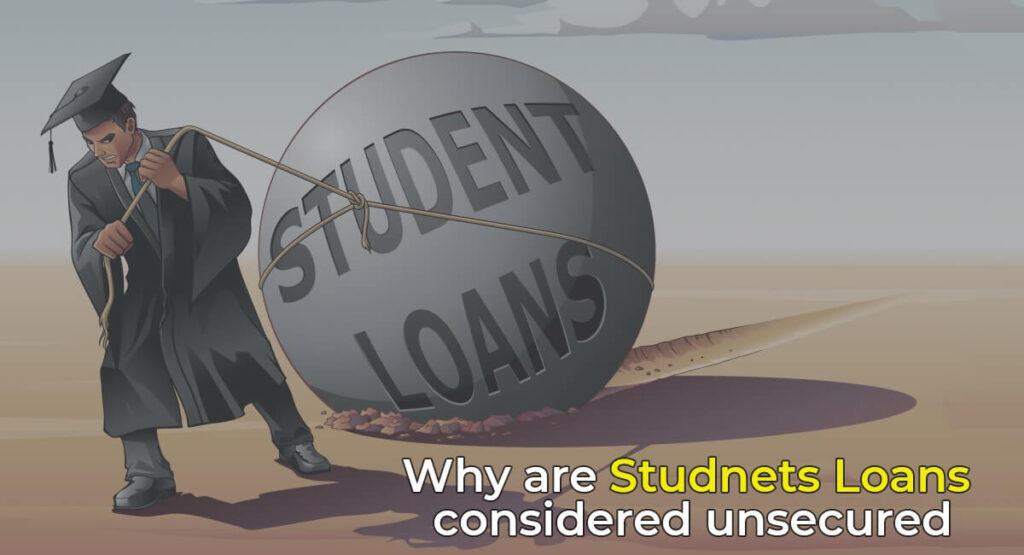What is a student loan?
A student loan is a type of loan that is specifically designed to help students pay for their education. These loans can be used to pay for tuition, books, housing, and other educational expenses.
Welcome to Fintech Basics, your go-to resource for all things related to financial technology. Today, we’ll be discussing why student loans are considered unsecured. If you’re a student or someone who’s planning to take out a loan for educational purposes, it’s important to understand the different types of loans available to you.
Student loans are a common form of financial aid that helps students pay for their education expenses. There are several types of student loans, including federal and private loans. However, when it comes to the security of these loans, they can either be secured or unsecured.
Secured student loans require the borrower to put up collateral, such as a car or a house, to secure the loan. While this may help borrowers qualify for lower interest rates, it also puts their collateral at risk if they fail to make their loan payments.
On the other hand, unsecured student loans do not require any collateral. This means that lenders rely solely on the borrower’s creditworthiness and income to determine if they’re eligible for the loan. While this may make it easier for students to obtain loans, unsecured loans typically come with higher interest rates and fees.
In this article, we’ll explore the different types of student loans and the pros and cons of both secured and unsecured loans. By the end of this article, you’ll have a better understanding of why student loans are considered unsecured and which type of loan may be best for you.
Types of Students Loans
There are two main types of student loans: federal student loans and private student loans. Federal student loans are provided by the government and are generally more affordable than private student loans. They also have more flexible repayment terms and may offer income-driven repayment plans, which can make them more manageable for borrowers with lower incomes.
Private student loans, on the other hand, are provided by banks, credit unions, and other private lenders. These loans generally have higher interest rates and may have stricter repayment terms than federal student loans. They may also require a cosigner, which is someone who agrees to pay back the loan if the borrower is unable to do so.
Both federal and private student loans can be either subsidized or unsubsidized. Subsidized student loans are need-based and the government pays the interest on the loan while the borrower is in school. Unsubsidized student loans are not need-based and the borrower is responsible for paying the interest on the loan from the time it is disbursed.
Secured loans for students Pros/Cons
Secured loans are loans that are backed by collateral, which is an asset that the borrower puts up as security for the loan. If the borrower fails to pay back the loan, the lender can seize the collateral and sell it in order to recoup their losses.
One potential benefit of secured loans for students is that they may have lower interest rates than unsecured loans, as the lender is taking on less risk because they have the security of the collateral. This can make the loan more affordable for the borrower.
Another potential benefit is that secured loans may be easier to obtain than unsecured loans, especially for students who have a limited credit history or who may not otherwise qualify for an unsecured loan.
However, there are also some potential drawbacks to secured loans for students. One concern is that if the borrower defaults on the loan, they could lose the asset that they put up as collateral. This could be particularly troubling for students who use a valuable asset, such as a car or a home, as collateral.
Students with limited assets may find it challenging to secure unsecured loans. Since lenders may require a significant amount of collateral as a guarantee.
Unsecured loans for students Pros/Cons
Lenders who lend money through unsecured loans take on more risk, as these loans are not backed by collateral. As a result, unsecured loans may have higher interest rates than secured loans.
Unsecured loans for students have no collateral requirement, so they pose no risk of asset loss in case of default. Students with limited assets or aversion to risking valuable items may find this particularly appealing.
Another potential benefit is that unsecured loans may be easier to obtain than secured loans. Especially for students who have a limited credit history.
However, there are also some potential drawbacks to unsecured loans for students. One concern is that the higher interest rates on unsecured loans may make them more expensive. Another potential drawback is that unsecured loans may have stricter repayment terms.
Overall, unsecured loans can be a good option for students who need to borrow money. But it is important for borrowers to carefully consider the potential risks and benefits.
Conclusion
In conclusion, understanding the difference between secured and unsecured loans is important. When it comes to borrowing money, especially for educational purposes. While secured loans may offer lower interest rates. They also come with the risk of losing collateral if payments are not made on time. Unsecured loans, on the other hand, do not require collateral but often come with higher interest rates and fees. Student loans are a common form of unsecured debt. It’s important for students to carefully consider the terms and conditions of their loans before accepting them. At Fintech Basics, we hope this article has provided you with a better understanding. About why student loans are considered unsecured and the pros and cons of both secured and unsecured loans. Be sure to do your research and consult with a financial professional before taking on any form of debt.
